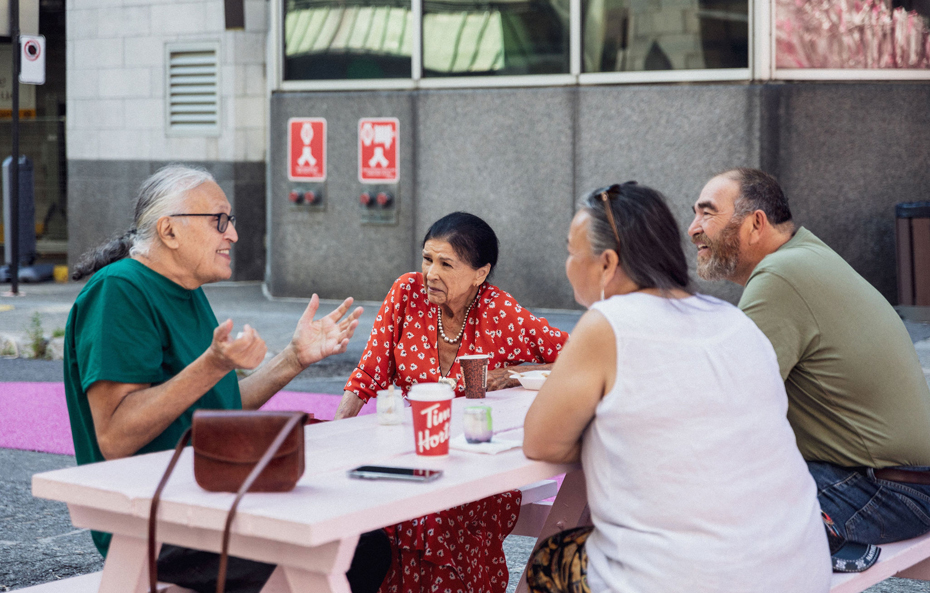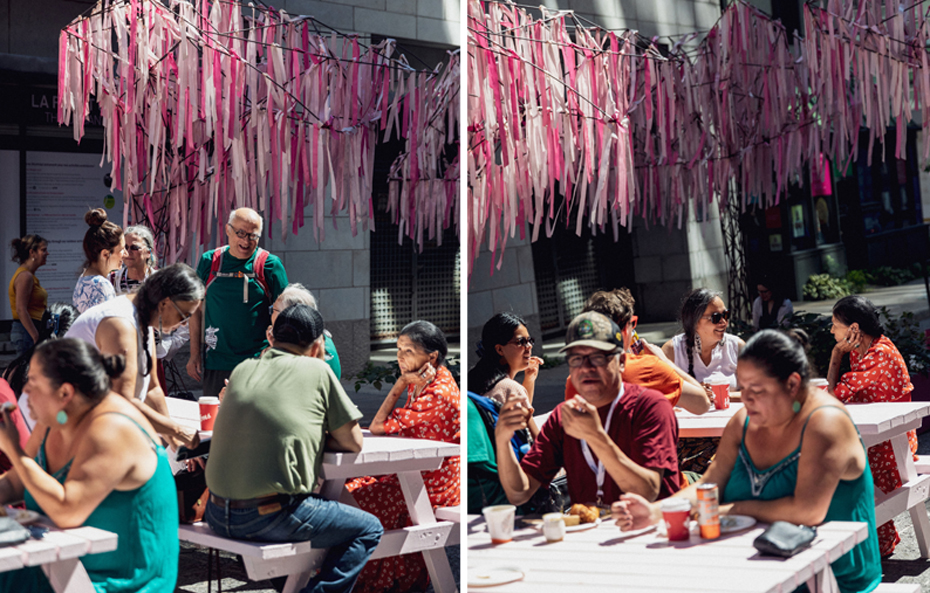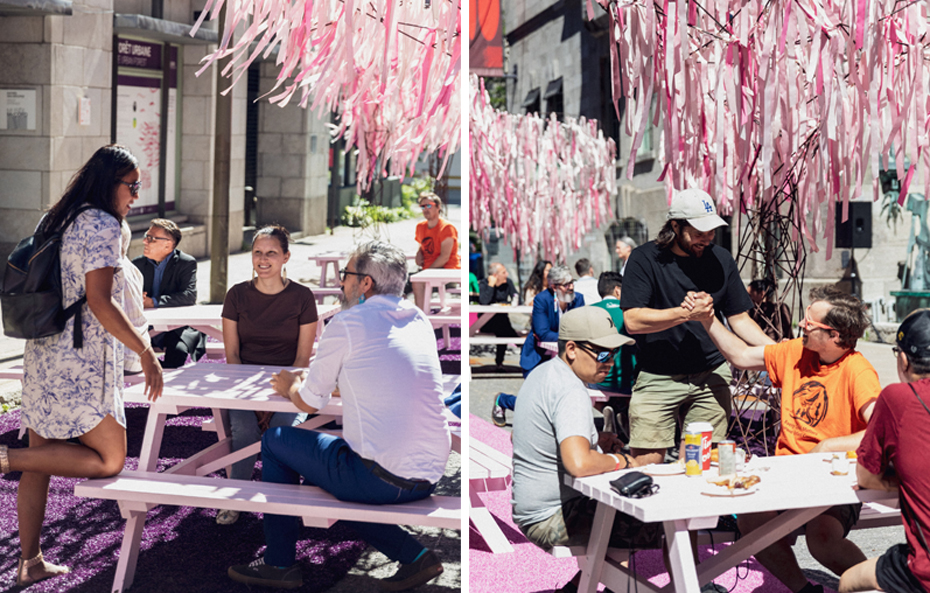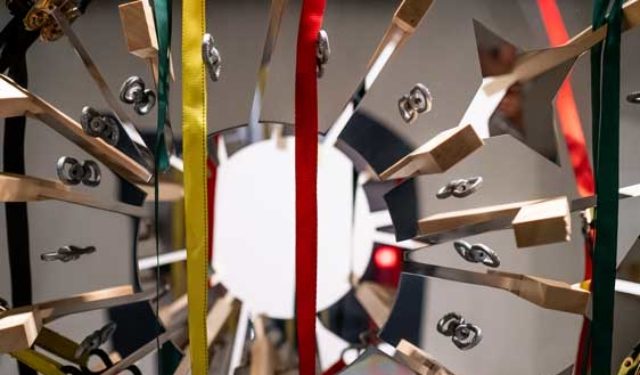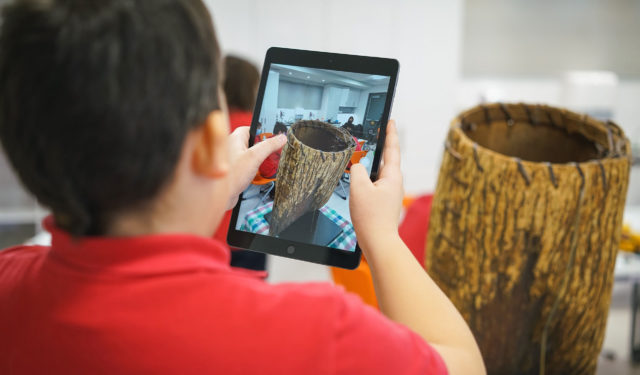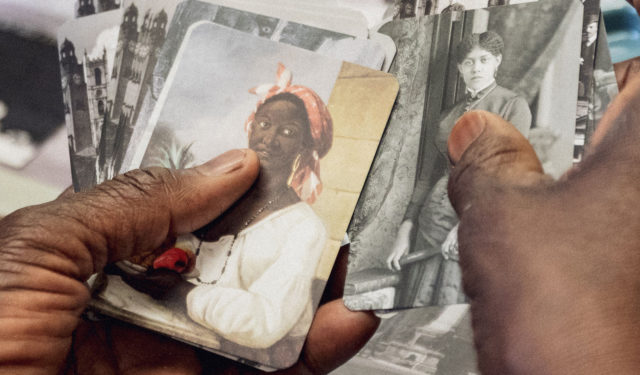Cultural Exploration Lab: Active reflection
Developing museum programming in collaboration with Indigenous communities.
May 16, 2023
Several initiatives involving the repatriation of museum artefacts to Indigenous communities have made the news in recent years. In addition, other partnerships and dialogue projects started in a spirit of reconciliation have primarily attempted to heal the wounds of colonial dispossession, a process in which museums have often been instrumental. With this in mind, the Conseil des arts de Montréal asked the McCord Stewart Museum to act as a catalyst for active reflection by hosting a workshop that would, ideally, foster major changes and generate inspiring projects.
At the Museum’s request, the author read the mission of the McCord Stewart Museum’s Cultural Exploration Lab, presented in 2021-2022 with funding from the Conseil des arts de Montréal, and has made some observations about its approach and the statements shared by the artists involved, the Indigenous representatives consulted, and members of the Museum team. At a time when many organizations are questioning their practices, the following article looks at the fundamental considerations underlying these initiatives.
United Nations declaration on the right of indigenous peoples
Indigenous collaborations with museums follow certain principles set forth in the United Nations Declaration on the Rights of Indigenous Peoples (UNDRIP), notably with regard to the repatriation of objects from their past.
According to Article 11.1, Indigenous peoples have “the right to maintain, protect and develop the past, present and future manifestations of their cultures, such as archaeological and historical sites, artefacts, designs, ceremonies, technologies and visual and performing arts and literature.” The document goes on to discuss the responsibilities of States who must facilitate access to and/or the return of these objects to Indigenous groups.
For many governments, this process involves more than simply easing one’s conscience or fulfilling certain legal obligations. In fact, Canada has incorporated the objectives of the UNDRIP into its United Nations Declaration on the Rights of Indigenous Peoples Act (UNDRIPA), which came into force on June 21, 2021. At this point, the concrete measures being adopted by museums with regard to Indigenous peoples are making history because we, as a society, are debating how institutions can best adapt their practices to respect the rights set forth in the UNDRIPA. In other words, now is the time to find creative, innovative ways of turning words into action.
Revitalizing indigenous culture
Fortunately, there are existing projects that can provide inspiration as we continue our reflection. These initiatives have generated numerous positive impacts, confirming the need to build bridges. For example, the return of certain sacred objects has enabled some communities to reappropriate the skills needed to make material culture objects and even revive ceremonial protocols.
After being silenced and suspended between worlds for generations, these masks, pipes, regalia (ceremonial garments), totem poles, etc. can now come back to life. Another example is the masterful work of composer and vocalist Jeremy Dutcher. Having unearthed wax cylinder recordings of his Wolastoqiyik ancestors singing songs and stories, recordings that had been hidden away in the archives of the Canadian Museum of History, he has brought almost forgotten melodies back to the world.
These efforts to revitalize cultures, reaffirm community identity and bridge generations clearly include an element of communal healing.
However, there is much to do beyond returning material objects if museums and Indigenous peoples are to establish relationships based on trust and respect. Museums face a monumental challenge as they bear the symbolic burden of being institutions that embody the material and spiritual dispossession of Indigenous peoples. Inhabited by ghosts, Canadian museums must navigate between the implementation of initiatives to promote reconciliation with communities and the need to address the trauma associated with traditional museum practices.
How can these institutions drive away the shadows and create spaces conducive to trust, sharing and dialogue with Indigenous peoples? How can they more deeply engage in the process of transforming this relationship?
Cultural programming and co-creation
Having extensively studied the principles of reconciliation and reparation, the McCord Stewart Museum then began to develop cultural programming in collaboration with representatives of Indigenous communities. Given its experience with and expertise in indigenization, the Museum team was asked by the Conseil des arts de Montréal to conduct an active reflection.
Various projects were thus launched following open discussions with members of Indigenous communities. Artists Ivanie Aubin-Malo and Barbara Diabo, university researcher Caroline Nepton Hotte, and Elie-John Joseph of non-profit organization Wapikoni Mobile were invited to offer their viewpoints and share their visions of cultural programming based on fresh approaches that reflect the realities and needs of Indigenous creators and visitors.
The voices of Indigenous participants were heard inside the Museum’s walls and these discussions produced the following observation: to become a welcoming space for sharing, the institution had to review some of its practices. It had to do things differently and figure out how to open its doors in a way that considers the expectations expressed by partners from the community.
A safe space and enhanced access
Various projects were implemented to make the Museum a space where Indigenous artists and communities feel fully welcome. For example, rooms are now available for events organized by, for and with Indigenous groups, enabling them to develop a different connection with a place where members of the public are usually just anonymous passers-by.
Although this is doubtless an excellent initiative, especially since urban settings offer few culturally safe spaces, other challenges remain concerning how far this door-opening process can be taken. How can the Museum’s safety and control standards, which are needed to protect its collections, be reconciled with the presence of ceremonies that require the burning of sacred herbs?
Artefacts in the McCord Stewart Museum’s collection that originated in Indigenous communities were another topic of discussion. The message from the Indigenous individuals with whom we worked was clear: the rules regulating access to these objects must be revised to enable interested parties, including those who live in remote areas, to reconnect with these elements of their stolen past. Accordingly, at key moments in the process of determining its cultural programming, the Museum took action by developing two projects to invite people from Indigenous communities to come and see the objects associated with their cultural history.
However, it is here that the complexity of these initiatives becomes fully apparent. Some of these objects are quite fragile, so any enhanced access must be carefully managed. Secondly, key individuals in Indigenous communities have to be involved in any communications efforts. Finally, an often forgotten consideration is that individuals who could be disturbed by contact with ghosts from the past must be provided with adequate emotional and psychological support.
Although relatively straightforward, the example above illustrates the challenges of having various aspects of objects coexist in the museum space: the sacred aspect, the relevant material considerations, and the educational function that enables the public to learn about the richness of Indigenous cultures and history. In short, there is more work to do: just opening one’s doors to visitors is not enough to ensure that they feel like part of the family.
Fostering cultural safety
Reflecting on museum practices also raised a central issue: how can the institution foster the development of cultural safety? A culturally safe environment means that individuals engaged in an activity are not required to explain themselves or justify who they are. It enables them to feel as if they are in a place where the people, objects and procedures allow them to express their cultural identity. Although this concept is generally well understood, it is not always easy to implement. For example, the Indigenous self-identification process is an often fraught reality, particularly in urban settings where cases of cultural and identity appropriation have increasingly been denounced in the past few years. Museums must also navigate within the sometimes-fluid parameters of Indigenous identity, or else opportunities for reconciliation could be overshadowed by negative experiences that perpetuate a climate of mistrust. There is no simple solution, so it is essential to reflect, as a group, on the measures to put in place.
A worldwide process
Finally, it appears obvious that these issues must continue to be the subject of a multifaceted collective reflection. With whom must the relationship be restored? In other words, towards which people or groups do museums have a special responsibility with regard to the collections they preserve? How can museums dispel the aura of inaccessibility surrounding these objects? How can they be flexible and responsive to the needs of communities and individuals while taking into account organizational constraints and institutional regulations?
Though there are many questions, there are no doubt multiple responses and opportunities for collaboration. What does seem clear is that museums no longer operate in a vacuum, especially when it comes to restoring relations with Indigenous peoples. On the contrary, by adopting an approach of reconciliation on a global scale, museums have an opportunity to take actions that can have an impact across the Indigenous world.
This active reflection is a process that involves listening, sharing, initiatives, and, above all, constant change. In short, we are learning to walk together, which is only natural when trying to establish a relationship. After all, to successfully bridge the gap between peoples, one must bring both empathy and a sincere interest in others.

